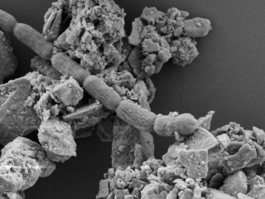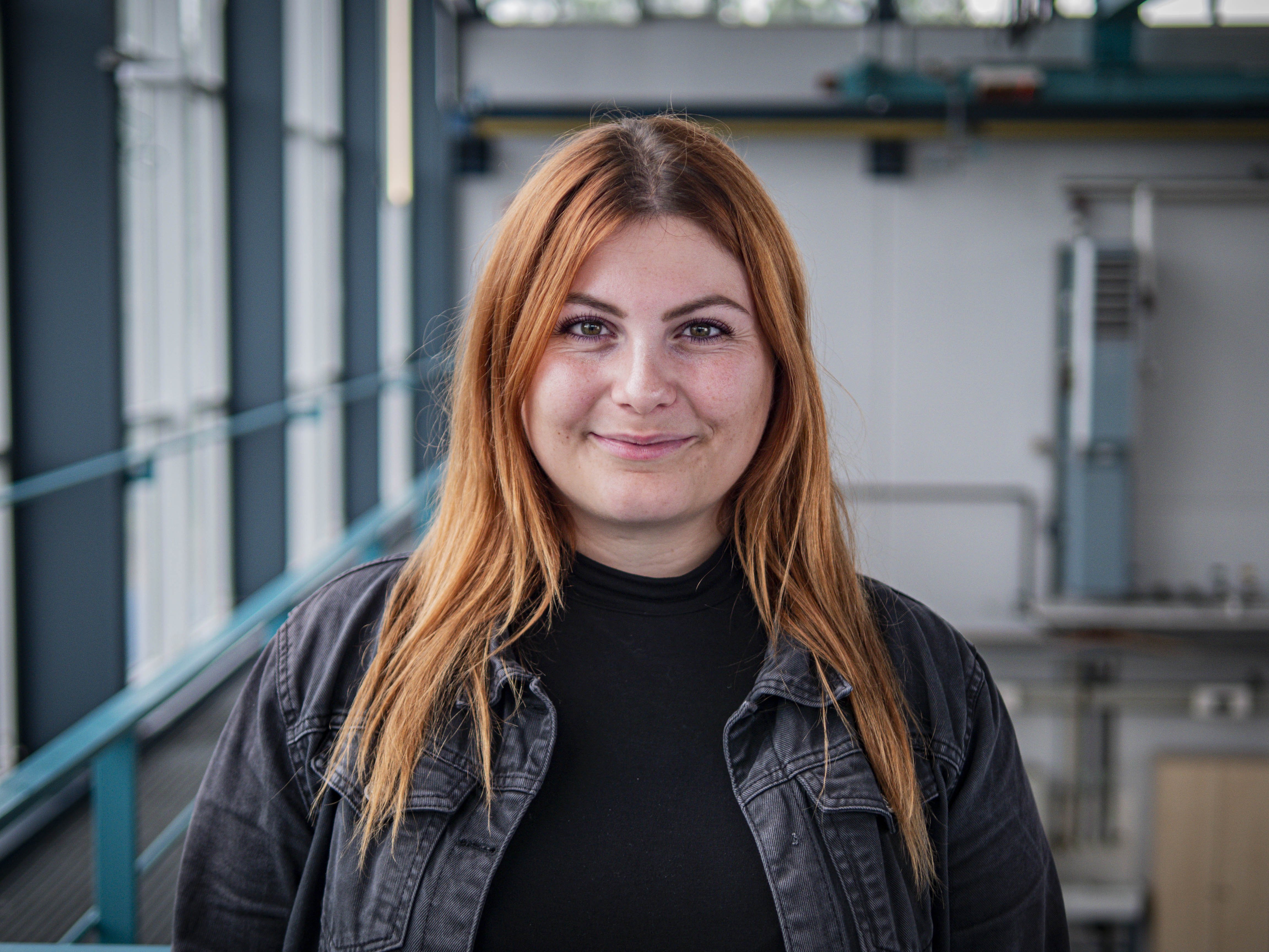LASM - Laboratory of Applied Space Microbiology
ABOUT OUR RESEARCH
We want to help make human expeditions beyond Earth sustainable.
Our focus is on the development of microbe-based technologies for long-term missions to Mars. One challenge there lies in providing essential consumables, which could be solved by producing these from Martian resources. Biology provides a solution: various organisms have the ability to produce drugs, food, oxygen, biomaterials and various chemicals, to mine metals and to process waste. But if biological systems must consume materials hauled from Earth, their running time without replenishment is limited. We therefore seek to understand how given microorganisms could serve as primary producers: how they could be fed from local materials and then support the growth of other organisms, opening the way to a wide range of biotechnologies.
Despite the name of our team, we do not restrict our work to microbiology. Reaching our goal requires accounting for the broader context; we therefore allow ourselves contributions to projects dealing with, for instance, engineering, materials science or planetary protection.
Green bacteria on a red planet
A large part of our work relies on cyanobacteria: fed with materials available in the Martian ground and atmosphere, they could provide feedstock for a range of bioprocesses which, in turn, could produce a wide range of consumables.
This video explains why we chose a specific species among them – Anabaena sp. PCC 7938 – as a model, and how they could be used to support Mars missions.
Our fields of research
- Cyanobacterium-based life-support systems for space exploration
- Adaptive laboratory evolution (ALE) of cyanobacteria under Mars cultivation-like conditions
- Cyanobacterium-regolith interactions for in-situ resource utilization
- Multi-omics analysis of cyanobacterial adaptation to extreme conditions
- Cyanobacterial physiology under non-terrestrial atmospheres (low pressure, artificial gas compositions)
- Photobioreactor design supporting microbe-mineral interactions
CONTACT

Sustainable bioproduction on Mars
A long-term human presence on Mars requires a continuous provision of consumables for the crews. To help address this need, we are working to lay the foundation for sustainable bioproduction processes in Martian settlements. Our approach combines microbes and plants to produce essential resources, from fertilizers to food to bioplastics to oxygen, as well as to recycle organic waste – all starting from materials available in Mars’s ground and atmosphere. Our system is versatile and modular; it could be used to connect further bioprocesses to local resources, thereby alleviating the need for consumables imported from Earth. This research is funded through the University of Bremen's Humans on Mars Initiative and is carried in collaboration with the groups of Prof. Dr. Sven Kerzenmacher (UFT, Uni. Bremen) and Dr. Daniel Schubert (DLR Bremen).

Adaptive laboratory evolution of cyanobacteria
We use adaptive laboratory evolution methods to increase the fitness of cyanobacteria to conditions relevant to their cultivation on Mars. We mainly focus on resistance to perchlorate, a toxic compound widespread in Martian regolith, as well as abilities to use regolith substrates. We then investigate, at the genomic, proteomic, metabolomic, and physiological levels the adaptaions that enable improved fitness under these conditions. These insights contribute to the development of microbial systems for in-situ resource utilization, oxygen production, and bioremediation in future space missions.

Cyanobacterium-regolith interactions
We aim at understanding how Anabaena sp. adapts to direct contact with Martian regolith, investigating its ability to attach, form biofilms, and derive nutrients from it. By employing geomicrobiology and multi-omics approaches, we explore their responses at both physiological and molecular levels, aiming to unlock their potential for life support and ISRU on Mars.

Cyanobacterium responses to unusual atmospheres
Using Atmos, a photobioreactor made in-house and in which atmospheric pressure and gaz composition can be controlled, we study how cyanobacteria respond to changes in given atmospheric parameters. This helps us predict their growth in conditions foreseen for their cultivation on Mars.


The list below shows the latest 25 publications of this research group. For the complete, searchable list of ZARM publications, please click more
2016
BIOMEX on EXPOSE-R2: Preservation of cyanobacterial Raman biosignatures after Martian ground-based simulation exposure
2016
Misconceptions of synthetic biology: lessons from an interdisciplinary summer school
NanoEthics, 10 :327—336
2016
Publisher: Springer Netherlands
Preservation of biomarkers from cyanobacteria mixed with Marslike regolith under simulated Martian atmosphere and UV flux
Origins of Life and Evolution of Biospheres, 46 :289—310
2016
Publisher: Springer Netherlands
Sustainable life support on Mars—the potential roles of cyanobacteria
International Journal of Astrobiology, 15 (1) :65—92
2016
Publisher: Cambridge University Press
Synthetic biology for space exploration: promises and societal implications
Ambivalences of creating life: Societal and philosophical dimensions of synthetic biology :73—100
2016
Publisher: Springer International Publishing
2015
A first step toward liposome-mediated intracellular bacteriophage therapy
Expert opinion on drug delivery, 12 (9) :1411—1424
2015
Publisher: Informa Healthcare
A new network for astrobiology in Europe
Astronomy & Geophysics, 56 (2) :2—15
2015
Publisher: OUP
A question of attire: dressing up bacteriophage therapy for the battle against antibiotic-resistant intracellular bacteria
Springer Science Reviews, 3 :1—11
2015
Publisher: Springer International Publishing
Astrobiology from early-career scientists’ perspective
International Journal of Astrobiology, 14 (4) :533—535
2015
Publisher: Cambridge University Press
BIOMEX on EXPOSE-R2: Preservation of cyanobacterial biomarkers after Martian ground-based simulation exposure
Exobiologie Jeunes Chercheurs EJC'15
2015
2014
BIOMEX: Three different steps to approach a systematic determination of habitats and stable biosignatures in space-and Mars-like environments
2014
Biosignature Characterization: from Lab to Space
40th COSPAR Scientific Assembly, 40 :B0—6
2014
Detection of macromolecules in desert cyanobacteria mixed with a lunar mineral analogue after space simulations
Origins of Life and Evolution of Biospheres, 44 :209—221
2014
Publisher: Springer Netherlands
Preservation of cyanobacterial biomarkers after Martian ground-based simulation Exposure
2014
2013
Elucidating microbial adaptation dynamics via autonomous exposure and sampling
, AGU Fall Meeting AbstractsVolume2013, Page B23E—0597
2013
Engineering extremophile chassis for space exploration
2013



